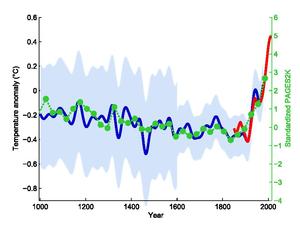The myth of Terroir in making wine
Today’s post is about a myth in wine making. The word “Terroir” in French means taste of the earth. This myth goes way back in time. So today we will explore and explode this myth. So how it started, with accounts of monks identifying terroirs by tasting (eating) the dirt. There are indeed accounts of “tasting terroir” associated with secular agronomists. These stories were most likely made up. Then repeated in so many places that they became accepted as true. Repetition does not make them true. They need to be regarded with healthy skepticism until good documentary evidence supports them.
A more accurate History of Terroir
The history of terroir is misrepresented. It does not translate to other languages (English) well. Terroir has not been the basis of French wine for centuries. It was not discovered by monks who noticed that the wines from one vineyard were different from those in another vineyard. For most of its life, terroir was associated only marginally with food and wine, and more with human character and language.
Terroir began with language usage
The earth and air in specific locations were believed to produce certain kinds of people who spoke particular languages. In general, the Île-de-France (the area around Paris) was thought to be free of terroir. People there were cultured and intellectually lively and spoke a pure language. The language that eventually became the basis of standard French. In contrast, the terroir of the provinces was blamed for their inhabitants being rustic and coarse. Their languages were crude sort of like most farming rural areas languages today.
The of terroir definition evolved
When applied to wine, terroir was a similarly negative reference for centuries, and consumers were advised to avoid what are now approvingly called “terroir-driven” wines. In the 18th century, for example, Champagne was praised as terroir free, while Burgundy was condemned as reeking of terroir. It wasn’t until after the Second World War that the modern sense of terroir—the physical environment that vines grow in—emerged fully, and then it was constructed to give French wines a boost as they recovered from nearly a century of disasters: phylloxera, overproduction, widespread fraud, economic depression, and two world wars.
Thus the myth of Terroir in making wine
Even as the definition evolved, terroir was believed to be specific to France: French wines were unequalled because they were made from vines growing in French terroir. There was never any intention that terroir, as an explanation for the excellence of some wines, would extend beyond the borders of France. When French agronomists and winemakers visited New World wine regions in the 1960s and 1970s, they made it clear that these regions had no terroir—not that they had inferior terroir, but that they had no terroir. By that time, having no terroir was a bad thing.
Coming to Terms with good marketing
Advertisements often tell us that a producer has vineyards that go back to the 14th century. The family has been making wine for 12 generations. This is good marketing because it implies a clear continuity over time. It appeals to our sense of lineage, stability, and tradition, all powerful and positive associations.
However, the concept of terroir demonstrates wine making has not been continuous. French vineyards have been replanted over and over. The replacement of dead or unproductive vines happens. Some vineyards replace the vines every 20 years because they become unproductive. Introducing new varieties to replace others, is now common.
Change happens
Vineyards in many French regions were devastated by the Black Death from the mid-1300s. Then the Hundred Years’ War to the mid-1400s, and by the frigid winters of 1693 and especially 1709. The countrywide ravages of phylloxera are well known. Then, there were hundreds of regional disasters resulting from war, weather, and diseases. In all these cases, decisions were made about creating, replanting, and abandoning vineyards, and about which grape varieties to replant, abandon, and introduce.
There was a lot of uncertainty about grape varieties until the 19th century, as many regions and smaller localities had their own names for each variety. Now with DNA tests we are able to determine wine vines heritages. There were abortive attempts in the 18th century to categorize varieties. These projects met with limited success until the late 19th and 20th centuries. Until then, the great majority of France’s vineyards were planted haphazardly, rather than in rows, and were interplanted with several varieties. As a result, until vineyards were replanted after phylloxera, French wines were almost invariably field blends—even in Burgundy, where Pinot Noir was dominant but was interplanted and vinified with white grapes.
Patterns of viticulture like these undermine the frequent claim that one reason why the French have been so successful with wine is that they’ve had centuries to match varieties with locations. They have had centuries, it’s true (like Spain, Italy, and other countries), but for the most part they settled on their current pairings of varieties and sites only when they replanted after the phylloxera period—sometimes as late as the 1950s.

Field Blends
Consequently they ignore the fact that until recently, French wines were field blends, made from several varieties picked simultaneously so that the grapes were variously green, ripe, overripe, and rotten. They were crushed and vinified together, the must was fermented in open tanks for weeks, and the wine was stored in dirty barrels. Marketers would be well advised not to claim their wines are made in a “traditional” way. These wines satisfied the nutritional and sensory needs of earlier generations, but they wouldn’t do now. Modern organic and biodynamic methods and technology have taken over the processes.
Many Vineyards keep this field blend tradition
The history of French wine is interesting enough without the myths that have been embedded in it. It’s a story of battles against myriad challenges, including wars, vine diseases, political upheavals, production-consumption imbalances, climate, and trade embargoes. It’s a story of the successful creation of regional brands and the national brand. And it more than stands up without the help of myths. One such winery is Acorn in California.

In Summary
As I attempt to grow grape wine vines. I will be using a my new evolving super biodynamic methods. Finding what works in my area is critical. Next, is to correct the worn out soil. More on this later. Also there are new varieties being created to deal with climate changes, insect damage and uncertain weather patterns. Thus I will be trying new vines yearly till I find the vines that grow the best where I live.